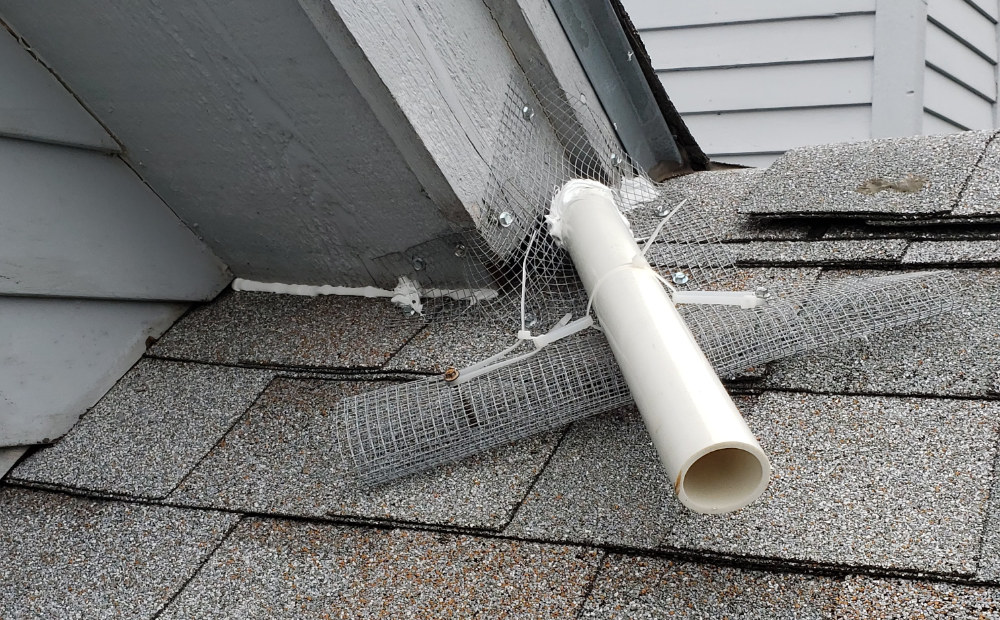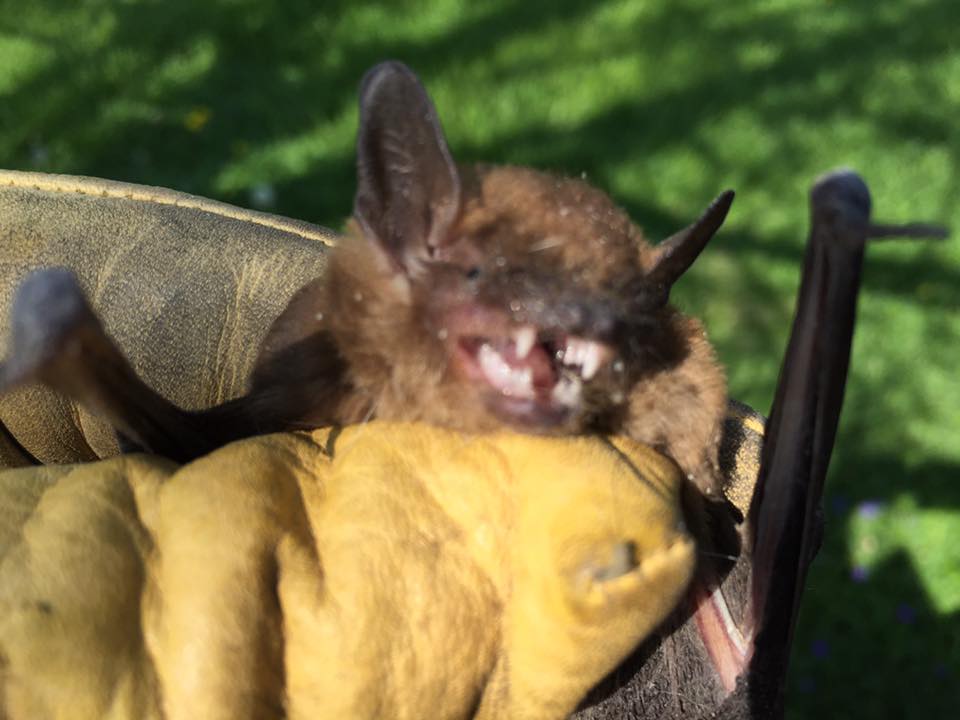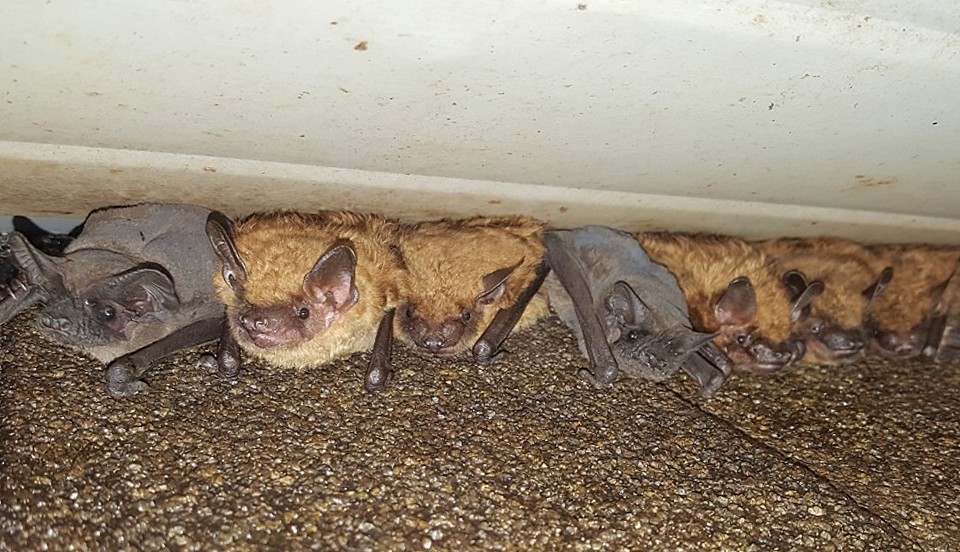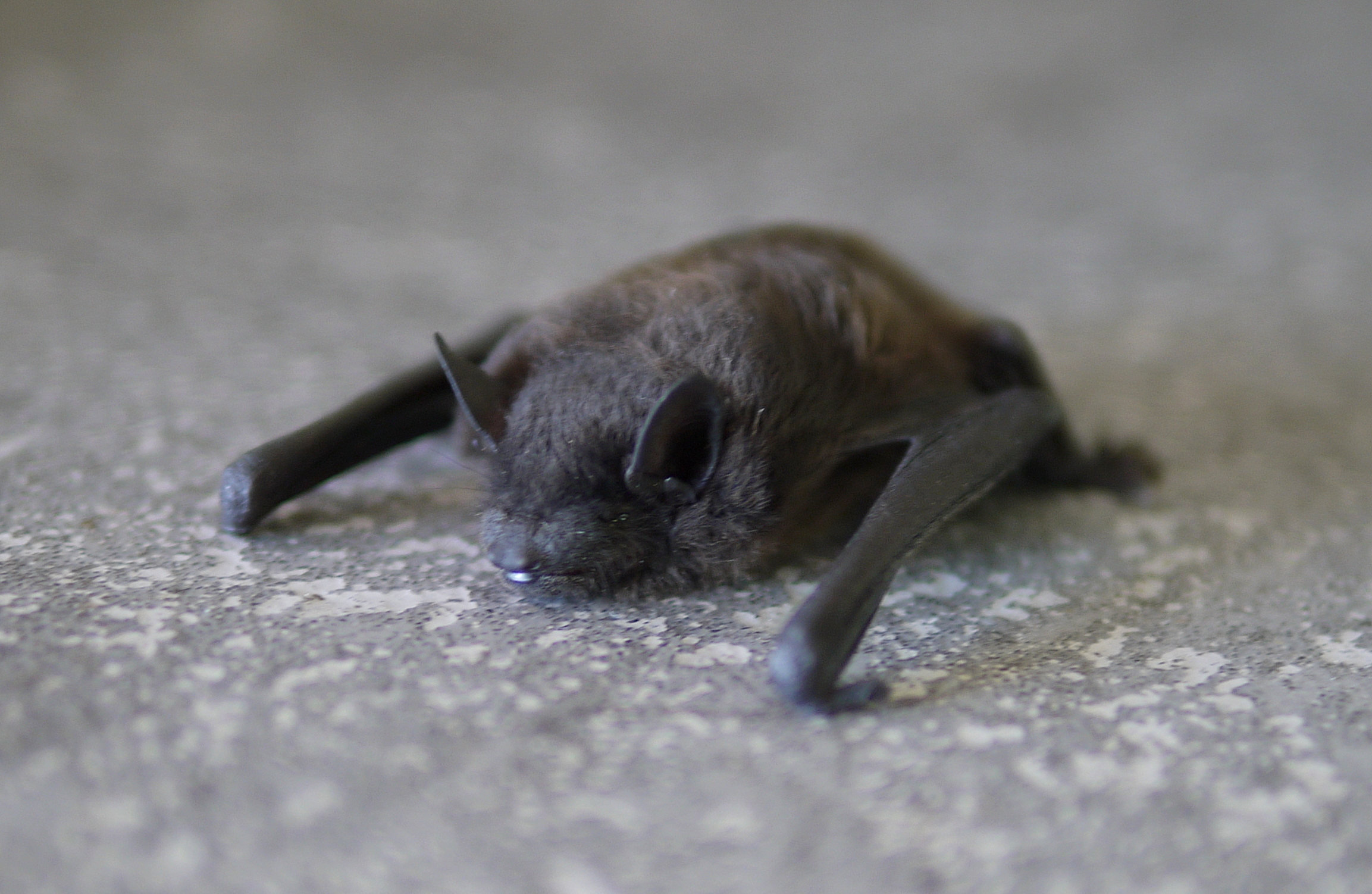We provide remove bat removal in Springfield, MA. Your home is a perfect nesting ground for Bats. If you see bats flying around your home in the evening, then it is possible that you may have bats living in your home. Call us 413-454-2711 to do an inspection and we will let you know if you have bats in your home and how to best remove them. We will humanely remove the bats. Bat removal should not be attempted by an inexperienced person. Bats and the guano they leave behind are a breeding ground for insects. They also can also carry diseases that may be spread to you or your pets. Bats are vulnerable to rabies so call now for expert bat removal in Hampden County, Massachusetts.

Bats In The Attic
One of the more common places that you will find bats is in the attic of your Springfield home. Left unchecked a colony of bats can grow quite large. As the bat colony grows in size the bat guano can cause serious damage to your attic, in addition to your health. It can be easy to forget about attic dwelling bats if you do not use your attic often. We are experts at Bat Exclusion. Why spend good money to remove bats if they can just come back?
Attempting to remove bats in the attic is a difficult task at best, and a dangerous one at worst. Attics can also be very difficult spaces to work in without the proper equipment and training. Bat removal can be quite difficult; even for trained professionals. As a result it is best to rely on trained experts to safely exclude bats from your attic. We will safely remove the bats and prevent them from returning. Through use of one way doors we will safely remove the bats. We will inspect to home, find any entrance points and seal them up. Calling for professional help is the smartest way to deal with bats in your attic.
Bat Damage Repair
Once the bats are removed your home may be left with a need for bat damage repair in Springfield. Urine often soaks insulation in most attics. It smells and damages the insulation over time. Bat droppings can pile up into large mounds. In extreme cases it may even cause structural damage. To make matters worse, bat droppings are both flammable and explosive. To keep bat problems from coming back, we need to seal up every nook and fix any damage. We are experts in carpentry and can repair any bat damage to look like new.
Our team has the tools to safely remove stained insulation from your home and then replace with new. We have the proper equipment to prevent the spread of disease causing guano and make your attic livable again.

Humane Bat Removal Process
So you’ve just discovered bats are your new upstairs neighbors and you want them out. We’re with you on this. Bats are flying mammals commonly found around houses during summertime. They are small in size and squeeze through tiny gaps and holes, especially those in the upper peaks of your roof. These bats form colonies and can stay up to a year in your house. Yikes.
Having bats in a building exposes the residents to many dangers, which is why professional help from Nuisance Wildlife Pros is necessary. Bats use your house as a roosting site and leave waste droppings all around. These droppings build up at a fast rate as bats digest their meals within minutes, excreting waste by the hour, both inside and outside the house.
If left unattended, the number of bats in your house could double in size. At Nuisance Wildlife Pros, we can humanely get rid of these bats, as well as ensure they do not return to your property. There have been rumored to be many ways to get rid of bats using mothballs or ammonia, ultrasonic sound emitters, and strobe lights, but these are false and fraudulent. The most effective way of removing bats from your property is also the humane way which is bat exclusion. For more information visit pestcontrolbat.com
Removing Bats from Your Property
Bats are fond of staying in warm, dry, and high places, making your attic, chimney, roof, and even windows, a good roosting spot for them. Removing bats is not an easy task, and should be carefully and accurately done. However, most bats in the United States are protected by law, so if you want to get rid of them by yourself, you should be familiar with laws concerning their removal. Nonetheless, the following are the ways to remove bats from your house.
- Do a full house inspection
The first step anyone should take in getting rid of bats is identifying the holes or spaces where they are coming in from. Usually, a brown stain from the grease and oil in their fur is left around the holes they fly through. A completely thorough and professional check is necessary to ensure there are no undiscovered holes in your building.
- Determine the species of bat
There are over 1,400 species of bats, however, in the U.S, there are mainly 3 kinds of bats commonly reported for home invasions. It is important to know the kind of bat present in your building because different bats have different mating and hibernating seasons. So for safety reasons and to avoid more problems, it is in your best interest to not attempt removing a bat while it’s in its maternity season. And for most North American bats, the maternity season is from late May through mid-August.
- Bat Exclusion
An honest mistake some beginners make is trying to trap a bat. Bats are not to be caught or trapped, rather, excluded. Bat exclusion is the most effective way of getting rid of bats as it allows them to fly out of your building but prevents them from reentering. Bat exclusion involves correctly installing an exclusion device to the architecture where the bats’ primary exit point is. This should be done after ensuring that all other holes, gaps, and spaces in the building have been sealed. You must identify the right primary exit point the bats use, or the bats will be confined within your house. This job should be done with the utmost professionalism.
- Seal Up All Holes
When the exclusion is done, your building should be fully inspected to confirm that all the bats are gone, after which the primary exit point should be properly sealed.
- Clean Up
Bats leave a large pile of droppings inside the attic, chimney or, sometimes reaching up to a foot deep. The droppings can corrode metal and collapse a ceiling due to its weight. It can also grow fungal spores which when inhaled causes lung disease like histoplasmosis. When cleaning, be careful and thorough.
These are the recommended steps for removing bats from your property. However, there are a few tips you should know if you are going to remove bats from around your house.
- Bats fly out at night to eat, but not all the bats in a colony leave each night or at the same time.
- Weather can determine if the bats will leave your house or not.
- Do not remove bats during summer, as their flightless babies will be trapped in your house and can die.
- Don’t feed bats or get too close to them as they can bite, and they carry rabies.
- Do the bat removal work at night. It gives you the chance to monitor how the bats behave and find out the exact spaces they use to fly in and out of your house.
Removing bats from your property can be difficult with a lot of consequences if done improperly. Let’s make it easy for you. Contact Nuisance Wildlife Pros today.

Bat Prevention Tips
Bats are among the most common wildlife intruders in the United States. As human society has advanced and spread out, destroying natural bat dwellings, bats have learned to live alongside us.
Nowadays, it’s not at all uncommon to discover a colony of bats living inside your attic, and when you do, it stands to reason you’d call a professional wildlife removal company, like us.
At Nuisance Wildlife Pros, we’ve had plenty of experience dealing with bat colonies on human properties, and we’ve learned that the number one thing to focus on is prevention. Since bat removal can get tricky (they’re protected by law in many states), it’s best that you do what you can to ensure they don’t get into the home in the first place.
Check for gaps or other potential entry points.
There’s no point in worrying about bats, if they’ve got no way of coming inside, is there? So one of the best prevention steps you can take is regularly checking your home for loose areas.
Bats are fairly small creatures that don’t require a huge gap to get into your home. One trick that we, at Nuisance Wildlife Pros, have found helps spot the cracks is going up into the attic and checking the walls for any spaces through which the outdoor light gets in. Often enough, these are also big enough to allow a bat to get inside, as well. Needless to say, whenever you do find such a gap, fix it quickly, using materials that are difficult to chew or claw through, such as wire mesh.
De-clutter your attic.
This is also an excellent prevention tip for other types of intruders, as well. These animals are usually drawn to areas of the house that are uninhabited and crowded, as it’s easier for them to hide inside. This is why we’d recommend a regular clean-up of your attic, to remove excess boxing, or other items that animals might use to hide inside or behind.
Try not to leave the attic alone for too long.
Again, the number one reason why attics and basements are such popular hang-outs for bats and other wildlife intruders is that they are uninhabited, thus making detection pretty unlikely. As a homeowner, you might want to switch things up, however. Try going into the attic more often, because if the wildlife sees that the area is inhabited, and thus dangerous, they’re likely to leave it alone.
Check for bat damage.
Okay, this is more of a way to check if you’ve got bats already. But see, bats are highly secretive creatures. In our experience with Nuisance Wildlife Pros, it’s not uncommon to have bats living up in the attic for weeks or even months, before you become aware of them.
So we strongly suggest that you do a regular check of the attic and the roof, to make sure there’s no bat damage. What we mean by bat damage chiefly refers to bat droppings (also known as guano) which are highly corrosive, and of course, a health hazard.
Whenever venturing into an area that may be contaminated by guano or inhabited by bays, you ought to wear protective gear. This includes thick, rubber gloves, a face mask, and long sleeves, to avoid the risk of your bare skin touching a live or dead bat, or the bat droppings.
How can a professional help…
A professional wildlife removal company can also come and assess the situation, ensuring there are no bats or wild animals on your property. What’s more, we at Nuisance Wildlife Pros, can point out weaknesses and attraction points that may put you at risk of a wildlife invasion.

How to Remove Bats From The Attic?
Contrary to what you might think, most bats are docile and want to be left alone. But if they’ve turned your attic into a roosting site, they can cause specific problems, from minor annoyances like irritating noises to significant health issues from their droppings. Bat dropping (guano) is also acidic and can accelerate the deterioration of wooden and metallic structures in the attic.
However, getting rid of bats can be challenging because most bat species are protected as endangered species. Hence, you must thoroughly understand the legalities surrounding bat removal, especially in your district. In this post, we’ll share tips for removing bats from the attic.
- Take action only at the appropriate times.
During winter, certain bird species migrate while others hibernate in safe spaces like the attic. It is illegal to remove bats when they’re hibernating. Removing bats during their birthing season is also unlawful as you risk separating the mother from her pups. That’s why it’s best to plan bat exclusion in the late summer or early spring.
- Seal all entry holes
Bats are not strong enough to break into the attic. They, therefore, look for holes and cracks to gain access to the attic. Thoroughly inspect your property – especially the areas surrounding your attic – to identify such spots. Close these holes with caulk. Fix damaged shingles and eaves. Replace missing roof tiles. Since some bats species are small – and can squeeze in through 1/2 inch holes – pay careful attention to identifying small gaps.
- Use bat cones or flaps
Once you’ve found out how the bat is getting into your attic, you can install a bat cone there. A bat cone is an elongated plastic coning outwards. Since the exit is smaller, bats can squeeze themselves through it while coming out of the attic. However, they are unable to get back in through the tiny hole.
If the position of the entry hole makes it impractical to install a cone, you can opt for a flap. A bat flap is like a flat door that can only be pushed open from the inside. Bats inside the attic push through the door to get out of the attic but cannot push back in.
Cones and flaps are great options because you get rid of the nuisance bats without coming in direct contact with them.
- Bat repellents
If you want extra measures to ensure bats never return to your attic, then repellents are the way to go. The most recent kinds are ultrasonic sound repellents that distort bats’ echolocation. Powerful light in your attic can also make it an unfavorable roosting spot.
Natural repellents like essential oil spray (mint, eucalyptus, cinnamon, cloves, and peppermint) have a powerful smell that can keep bats away.
Attic Clean up and restoration
After getting rid of nuisance bats, you must clean and decontaminate your attic to prevent further deterioration and eliminate health risks. Ensure you put on your gloves, nose mask, and overall clothing before cleanup. Scrap off bat guano from the attic floor and put it in a plastic bag. Be careful not to inhale fungal spores as they can potentially cause histoplasmosis. If the insulation has been soiled beyond repair, you will need to replace it. You must also disinfect the entire area to kill pathogens. A deodorizer can help eliminate the terrible odor.
Hire a professional
Getting rid of bats from the attic can be challenging. And if you’ve been unsuccessful in your attempt, hiring a professional is a good idea. They will not only help get rid of this nuisance pest but will also perform the necessary cleanup and attic restoration.
